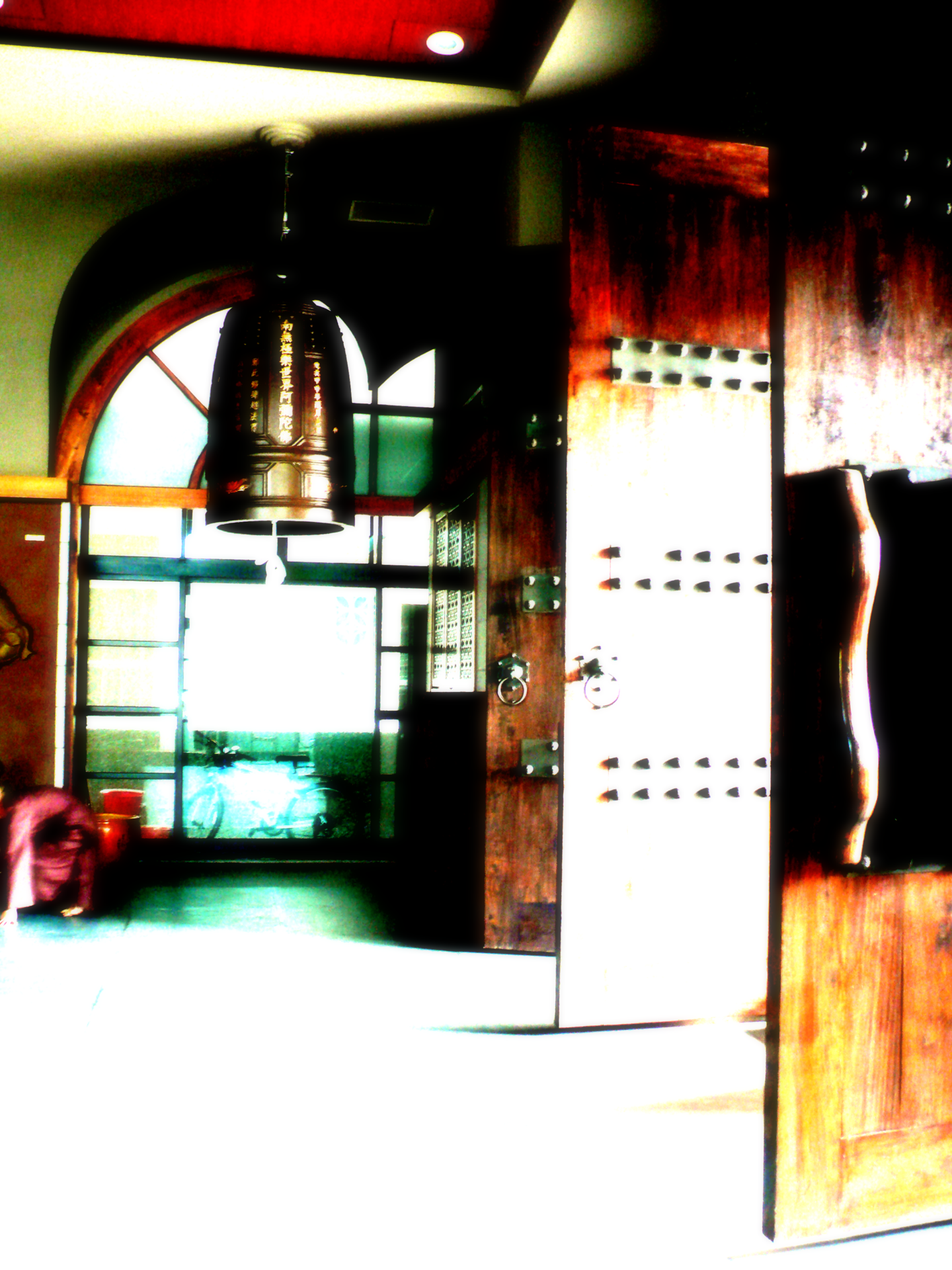An Interview with Eileen Kiera
By Tracey Pickup
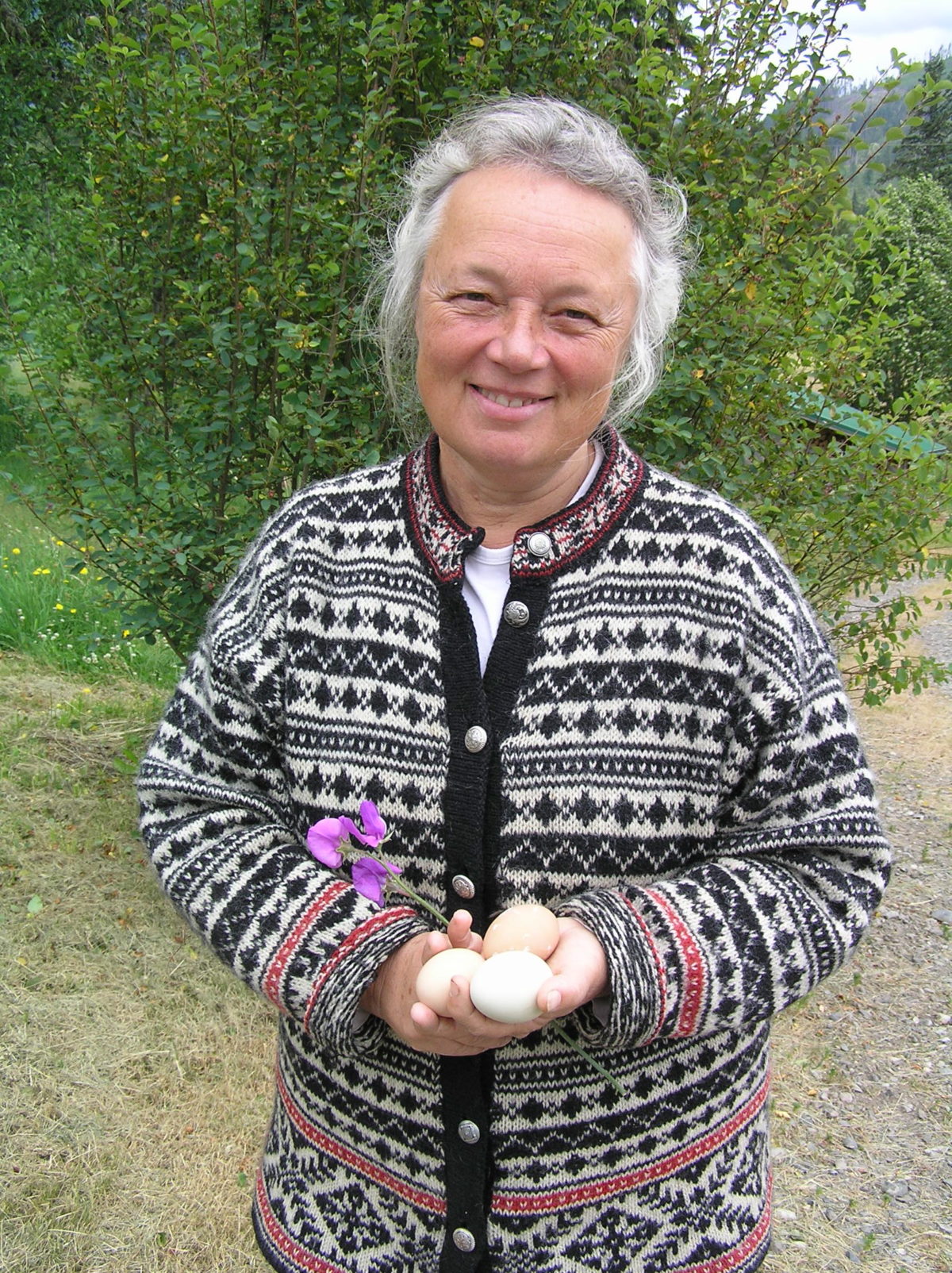
I first met Dharmacarya Eileen Kiera (True Lamp) at Deer Park Monastery when she was giving a Dharma talk. I found myself drawn in by her simple and illuminating presence and the intimate way that she spoke about the natural environment of the rural practice center, Mountain Lamp, where she lives in northern Washington.
An Interview with Eileen Kiera
By Tracey Pickup

I first met Dharmacarya Eileen Kiera (True Lamp) at Deer Park Monastery when she was giving a Dharma talk. I found myself drawn in by her simple and illuminating presence and the intimate way that she spoke about the natural environment of the rural practice center, Mountain Lamp, where she lives in northern Washington. Since that time I have returned to Mountain Lamp regularly to practice with her, the Sangha, the trees, and the forest creatures. On a late February day with the snow falling on firs and cedars, we sat down to talk about her life of practice.
Tracey Pickup: How and why did you start your spiritual journey?
Eileen Kiera: I believe I always had a spiritual draw toward stillness and the beauty of nature. That led to my eventual career as an ecologist specializing in arctic/alpine ecology. I began my meditation practice while working in the Arctic, where there was the vast spaciousness and deep stillness of the place. Only the periodic call of a bird or whistle of the wind broke the silence. I spent hours sitting behind a spotting scope watching the nesting sites of the Black Brant, and other activity in the salt marshes I was studying. In the summer the sun never sets, and I would sit through the days of bright, white sunlight and the golden nights when the sun ran along the northern horizon.
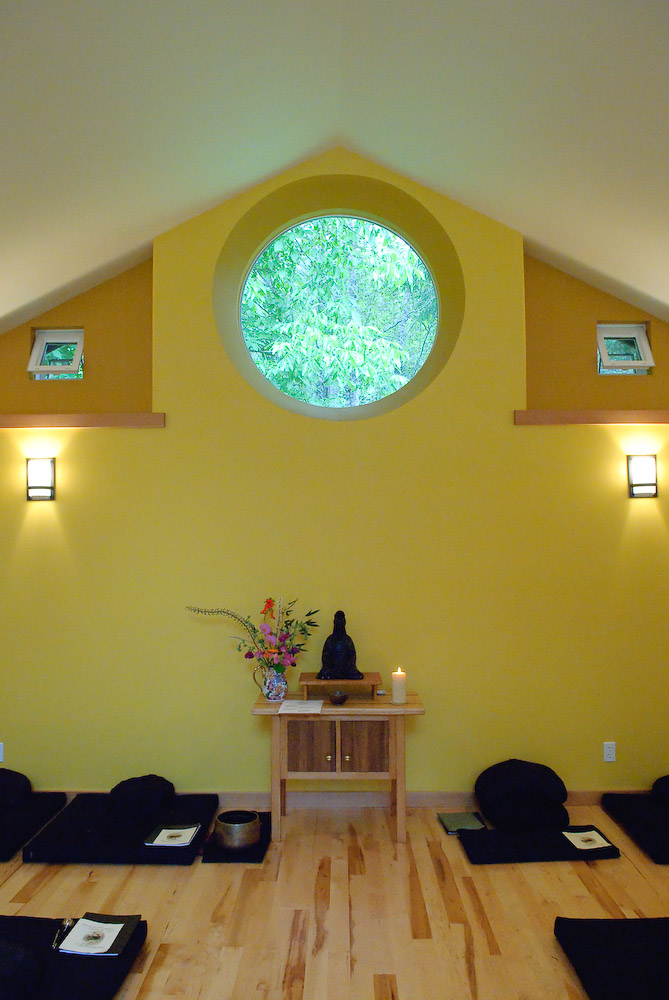
TP: What inspired you to follow Thay in those early years?
EK: Thay feels like a being of love. And peace. He emanates that, even in the face of all that he and Sister Chan Khong went through in Vietnam. When he talked about what he had gone through in the war, I always asked myself, “What would I have done in that situation?” I was challenged by his example as well as moved by his love.
TP: Was there any memorable moment or interaction that illuminated that?
EK: There were many. When we were at KokoAn, Thay noticed a beautiful calligraphy by Zen master Hannya Gempo. We walked up to look at it, so Thay could read the characters. I stood one step behind him out of respect, but he stepped back to stand equal with me. He wouldn’t let me stand behind him. Through the years, he has consistently shown me great kindness. At the same time, he cut me no slack when I’ve done something wrong. He told me when I was being foolish. He helped me see and transform so many habit energies and for that, I am eternally grateful.
TP: What are the general principles that he would consider foolish?
EK: Excluding other people, jealousy, competition, arguing, and picking and choosing who you did and did not want to associate with.
TP: What did you learn from being with him?
EK: I’ve learned to let go and to look with the eyes of love.
TP: You sought and found instruction in meditation. Why was it important to have teachers in your life? Couldn’t you have found this by seeking on your own?
EK: I couldn’t have. I continually get too caught in myself and my ideas and my constructs. I need a form and a teacher to challenge me to let those ideas, constructs, viewpoints, and attachments go.
TP: And by letting go of those attachments, what happened?
EK: Many layers of personality have fallen away, bit by bit, over the years. I feel more free, and in that freedom, there is a sense of peace and the connection that love gives.
TP: For most of your life you have been struggling with chronic celiac disease. How did you practice with the pain and the impact it had on you?
EK: I was sick without knowing why for many years. Before I was diagnosed, my practice allowed me to rest, and to transform personal pain and losses, kind of on a moment-by-moment basis—I didn’t know why life was so difficult, but practice allowed me to be there with whatever came. After I was diagnosed, and I under stood my difficulties better, my practice helped me to grieve and accept the losses. Mostly, however, celiac disease strengthened my determination and intention in practice.
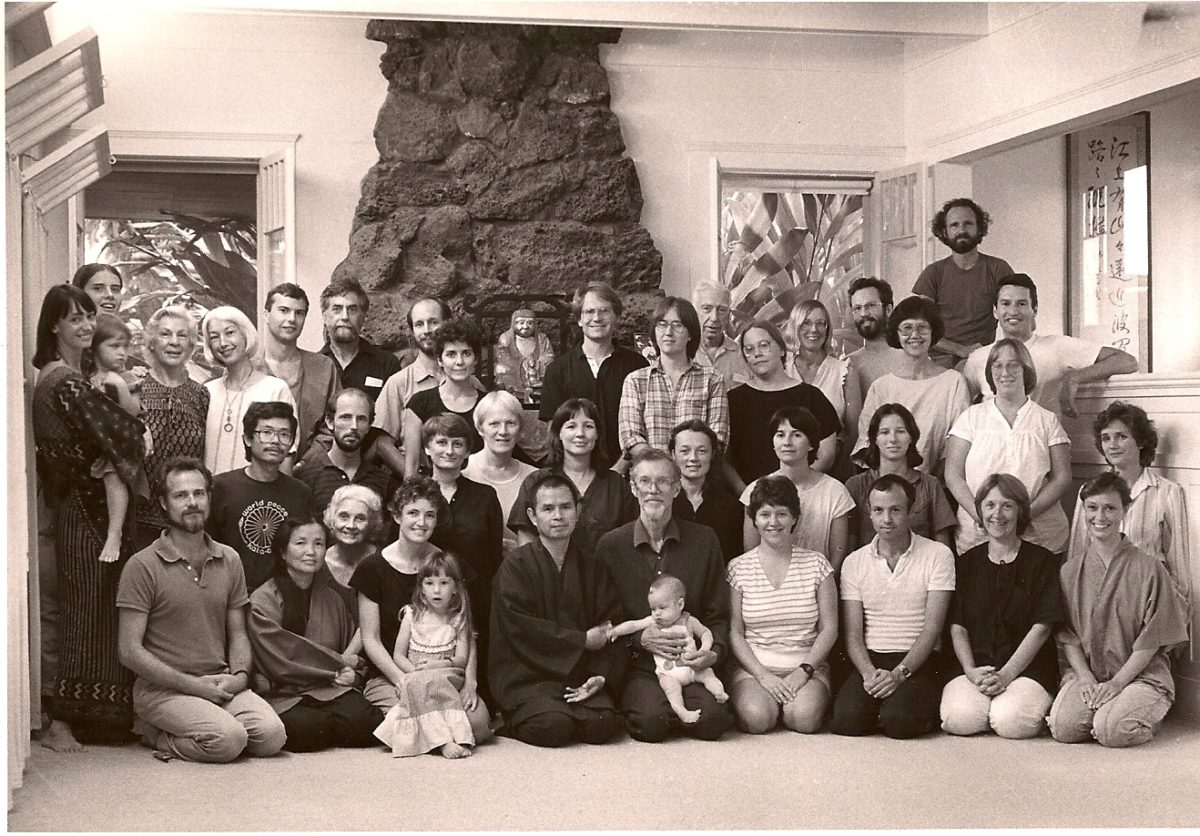
TP: How did you touch that intention when you were so sick?
EK: When I was most sick, shortly before diagnosis, I couldn’t sustain a sitting meditation practice. I didn’t have the energy to sit upright for any amount of time, but I could practice when I took a step from the bed. I could be completely there in that step. That’s what became my practice—just this breath, just this step. I couldn’t do what I thought of as practice, ideas like “now I do twenty-five minutes of sitting meditation,” or “now I need to go on a retreat.” I couldn’t do any of that. I could just take this step. It was really very helpful. My intention to practice became really strong. When I got diagnosed and began the journey back to health, that deep aspiration and strength of intention carried me through other obstacles. I knew I could practice with any circumstances: healthy or not healthy, living or dying, with suffering or with joy. Fewer things got in the way of being mindful.
TP: Do you find you still carry that same intention?
EK: Of course it has changed now, but yes. It kept my practice alive and constant through working in the world, raising a daughter, being with my father over the years of his illness and death. It was also the wellspring that gave rise to the vision of Mountain Lamp.
TP: In addition to supporting local Sanghas, working with students to deepen their practice, and leading retreats both here and in other countries, you are also developing a rural practice center in Washington for laypeople called Mountain Lamp. What gave you the inspiration to do this and why do you think it is important?
EK: A lot of it came from Jack and I wanting a lifestyle we came to know at KokoAn and Plum Village. We wanted to live in community, to have people to sit with and walk with, and to have the support of others in practice. We knew there were some things that were essential for practice—having a spiritual home, having a teacher, having a Sangha that shares an ethical basis of precepts and mindfulness trainings. So the aspiration is to create a life of practice that has the potential to support other laypeople and create community—a spiritual home for many people.
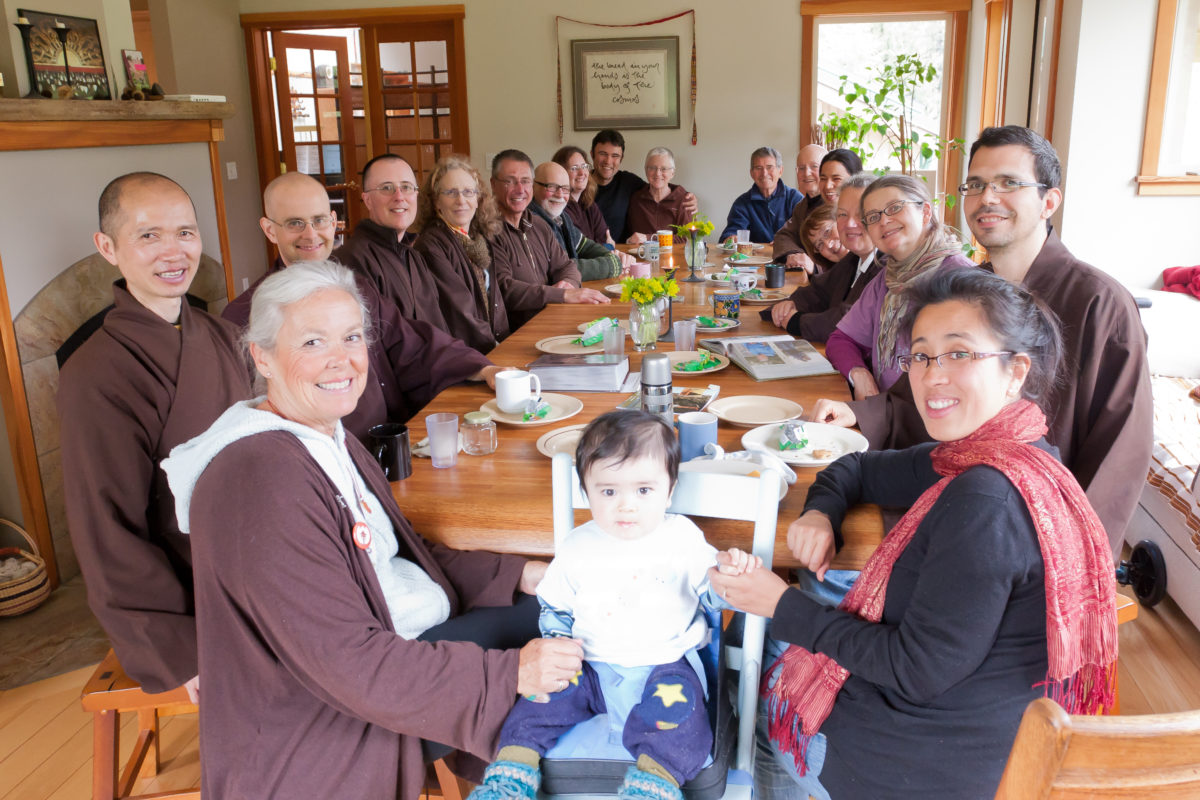
TP: What is happening with the community of Mountain Lamp right now?
EK: We have a daily schedule of sitting meditation in the morning, followed by breakfast in community and a period of work meditation. There are regular Days of Mindfulness and an annual one-month retreat. People come for personal retreats, and some people stay longer as residents.
In addition, my husband is a teacher in the lineage of Aitken Roshi. We hold Zen sesshin at Mountain Lamp as well as mindfulness retreats. In some things, Jack and I co-teach, but mostly we keep the forms of the traditions pure in their own right. Additionally there are Sangha-led events, like Days of Mindfulness, Buddha’s birthday, and the annual harvest festival.
Over the years, we’ve welcomed Sister Jina, Sister Annabel, Thay Phap Dung, and Thay Phap Tri to teach and lead the community in practice. We were grateful to have two brothers from Deer Park, Brother Phap Ho and Brother Phap De, lead a Day of Mindfulness at Mountain Lamp in May. In the years to come, we look forward to many more visits from our monastic brothers and sisters.
We are moving toward a more structured schedule with the awareness that as laypeople we need to work, and we have commitments outside of Mountain Lamp. We live together in an atmosphere of trust that we are together for the same purpose—to support each other and offer joy in practice.
More information about Mountain Lamp can be found at www.mountainlamp.org.
Tracey Pickup, True Fragrant Field, started the Wild Rose Sangha (www.wildrosesangha.ca) in Calgary, Alberta, Canada and is currently residing at Mountain Lamp as the Temple Keeper.

